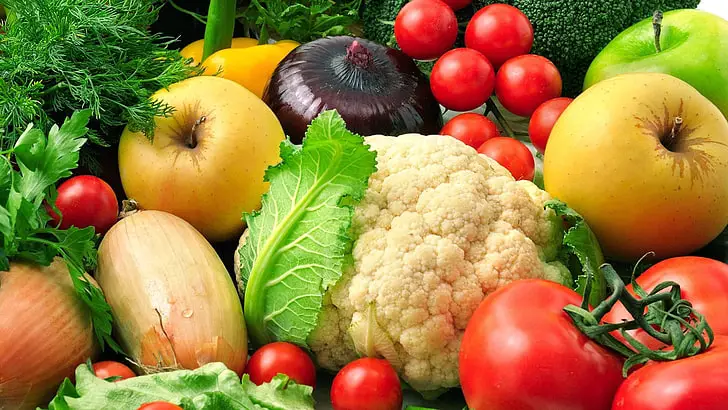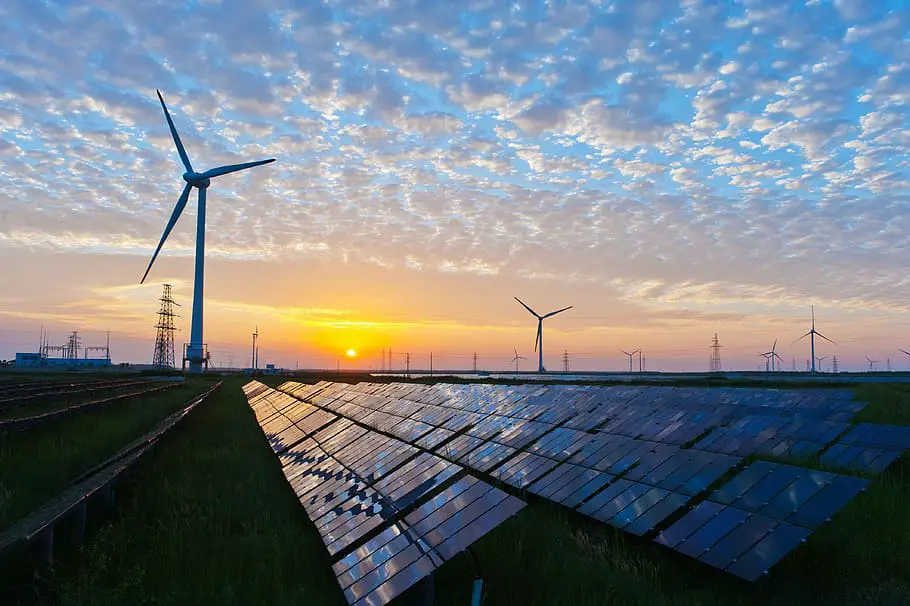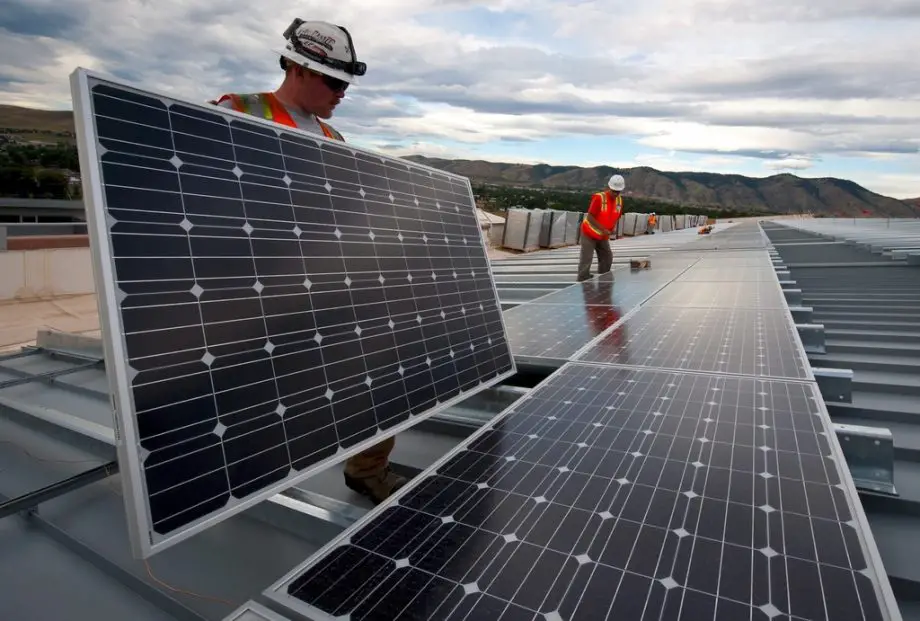
Discover the benefits of green technology in agriculture. Learn how it boosts sustainability, enhances crop yields, and fosters a healthier environment. Join the green revolution!
Ever wondered about the benefits of green technology in agriculture?
It’s not just about growing food. It’s about revolutionizing the way we interact with our environment.
From reducing carbon footprints to enhancing crop yields, green technology is transforming agriculture into a sustainable, eco-friendly powerhouse.
Let’s dive in and explore this fascinating world together!
Benefits of Green Technology in Agriculture
Welcome to a journey exploring the benefits of green technology in agriculture.
In this post, we’ll delve into how this innovative approach is reshaping the agricultural landscape, promoting sustainability, and offering economic, environmental, and social advantages.
We’ll also touch on real-world examples, and future trends, and address some frequently asked questions.
So, whether you’re a seasoned farmer, an enthusiastic environmentalist, or simply curious, there’s something for everyone.
Let’s embark on this green adventure together!
Definition of Green Technology in Agriculture
Green technology, often referred to as clean technology or Greentech is a term that encapsulates methods, materials, and techniques designed to minimize the negative impact on the environment.
When we talk about green technology in agriculture, we’re referring to the innovative tools and practices that make farming more sustainable and efficient.
This could include anything from renewable energy sources powering farm machinery, to precision farming techniques that optimize the use of resources.
Brief Overview of the Importance of Green Technology in Agriculture
Now, you might be wondering, why is green technology so important in agriculture.
Well, the answer is multi-faceted. Agriculture is a vital industry I mean it feeds the world.
However, traditional farming practices can be harmful to the environment, contributing to issues like soil degradation, water pollution, and greenhouse gas emissions.
Green technology offers a solution to these challenges.
It allows us to produce the food we need while minimizing harm to our planet.
Moreover, it can also make farming more profitable and efficient, creating a win-win situation for both farmers and the environment.
As we move forward, the role of green technology in agriculture is only set to increase, making it a crucial topic for us all to understand.
The Role of Green Technology in Sustainable Agriculture
Let’s now shift our focus to the role of green technology in sustainable agriculture.
It’s a fascinating topic that intertwines innovation with age-old farming practices.
Sustainable agriculture is all about meeting our current food needs without compromising the ability of future generations to meet theirs.
But how does green technology fit into this picture? Well, it’s like the secret ingredient in a recipe that takes something good and makes it great.
So, buckle up as we delve deeper into this intriguing intersection of technology and sustainability in the realm of agriculture.
Explanation of Sustainable Agriculture
Sustainable agriculture is a method of farming that focuses on producing long-term crops and livestock while having minimal impact on the environment.
It’s about more than just avoiding harm, though. Sustainable agriculture aims to create a system that is resilient, efficient, and balanced.
It’s about nurturing the health of the soil, promoting biodiversity, and managing water wisely.
But it also takes into account the economic viability of the farm and the well-being of farming communities.
In essence, sustainable agriculture is a holistic approach to farming that considers every aspect of the agricultural system.
How Green Technology Supports Sustainable Agriculture
Green technology plays a pivotal role in supporting sustainable agriculture.
It provides the tools and techniques that make these sustainable practices possible and efficient.
For instance, precision farming technologies can help farmers apply water and fertilizers more efficiently, reducing waste and environmental impact.
Renewable energy technologies can power farm operations with less pollution.
Innovations in biotechnology can lead to crops that are more resistant to pests and diseases, reducing the need for harmful pesticides.
In these ways and more, green technology is the engine that drives the sustainable agriculture movement forward.
Case Study or Examples of Green Technology in Sustainable Agriculture
Let’s take a look at a real-world example to illustrate this. One example of green technology in sustainable agriculture is the use of drones for precision farming.
Drones equipped with advanced sensors can monitor crop health, soil conditions, and moisture levels with incredible accuracy.
This allows farmers to apply water, fertilizers, and pesticides only where they are needed, reducing waste and environmental impact.
In California, for instance, some vineyards are using drones to monitor grapevine health and optimize their watering schedule.
This not only improves the quality of the wine but also saves water which is a precious resource in drought-prone California.
This is just one of the many ways green technology is making sustainable agriculture a reality.
Environmental Benefits of Green Technology in Agriculture
Next on our green journey, we’re going to explore the environmental benefits of green technology in agriculture.
It’s no secret that traditional farming methods can take a toll on our planet.
But with the help of green technology, we’re rewriting that narrative.
From reducing pollution to conserving biodiversity and improving soil health, the environmental benefits are both profound and far-reaching.
So, let’s dive in and discover how green technology is turning agriculture into a friend, rather than a foe, of our environment.
Reduction in Environmental Pollution
One of the most significant environmental benefits of green technology in agriculture is the potential for a substantial reduction in pollution.
Traditional farming methods often involve the use of chemical pesticides and fertilizers, which can contaminate the air, soil, and water.
Green technology offers alternatives that are much kinder to the environment.
For instance, precision farming techniques can drastically reduce the amount of chemicals used by applying them only where they’re needed.
Similarly, biopesticides derived from natural materials can replace harmful synthetic ones.
Conservation of Biodiversity
Biodiversity, the variety of life on Earth, is crucial for the health of our planet and our survival.
Green technology in agriculture can play a significant role in conserving biodiversity.
For example, agroforestry, the practice of integrating trees into farming systems, can provide habitats for a wide range of species.
Similarly, organic farming methods can help maintain soil biodiversity, which is vital for nutrient cycling and disease suppression.
Improvement in Soil Health
Healthy soil is the backbone of any agricultural system. It’s not just about growing plants; it’s about maintaining an ecosystem teeming with life.
Green technology can significantly improve soil health. Techniques like cover cropping and conservation tillage can increase organic matter in the soil, improve its structure, and enhance its ability to hold water and nutrients.
These practices not only make the soil healthier but also make farms more resilient to droughts and other climatic shocks.
Case Study or Examples Showcasing Environmental Benefits
Let’s look at a real-world example of these environmental benefits in action.
In the Netherlands, dairy farms have adopted a range of green technologies to reduce their environmental impact.
They use a robotic milking system powered by solar panels, which reduces energy consumption. They also use a precision feeding system that tailors the diet of each cow to its specific needs, reducing waste and methane emissions.
Moreover, they use a manure separator to recycle manure into bedding for the cows and nutrient-rich fertilizer for the fields.
These farms are a great example of how green technology can make agriculture more environmentally friendly.
Economic Benefits of Green Technology in Agriculture
As we continue our exploration, let’s turn our attention to the economic benefits of green technology in agriculture.
It’s a common misconception that going green is a costly affair. On the contrary, adopting green technology can lead to significant economic advantages for farmers and the agricultural sector as a whole.
From cost savings through efficient resource use to increased crop yields and the creation of green jobs, the economic benefits are as promising as they are diverse.
So, let’s delve into the dollars and cents of green technology in agriculture.
Cost Savings from Efficient Resource Use
Green technology can lead to significant cost savings in agriculture by making resource use more efficient.
For instance, precision farming technologies allow farmers to apply water, fertilizers, and pesticides more accurately, reducing waste and saving money.
Similarly, renewable energy technologies like solar panels can provide a cheaper, more sustainable source of power for farm operations.
These savings can add up quickly, making a big difference to a farm’s bottom line.
Increased Crop Yields
Another economic benefit of green technology in agriculture is the potential for increased crop yields.
Technologies like drip irrigation and precision farming can improve the efficiency of crop production, leading to higher yields.
Similarly, biotechnologies can develop crop varieties that are more resistant to pests and diseases, or that can thrive in less-than-ideal soil or climate conditions.
These technologies can help farmers get more out of their land and increase their income.
Creation of Green Jobs
The adoption of green technology in agriculture also has the potential to create new jobs.
These could range from jobs in the manufacture, installation, and maintenance of green technologies, to jobs in organic farming, agroforestry, and other sustainable farming practices.
These jobs can provide a significant boost to rural economies, where job opportunities may be limited.
Case Study or Examples Showcasing Economic Benefits
Let’s consider a real-world example. In India, a project called Digital Green has been using video technology to train small-scale farmers in sustainable farming practices.
The videos are made by and for the farmers, showcasing local examples of successful practices.
This approach has proven to be highly effective, leading to a 50% higher adoption rate of these practices compared to traditional training methods.
As a result, farmers participating in the project have seen significant increases in their crop yields and income.
This is a great example of how green technology can bring economic benefits to farmers.
Social Benefits of Green Technology in Agriculture
Having explored the environmental and economic benefits, let’s now delve into the social benefits of green technology in agriculture.
The impact of green technology extends beyond the fields and farm finances; it also touches lives and communities.
From improving food security to enhancing the quality of life for farmers and contributing to rural development, the social benefits are both profound and transformative.
So, let’s uncover how green technology in agriculture is not just a trend, but a tool for social progress.
Improvement in Food Security
Food security is a major global concern, and green technology in agriculture can play a crucial role in addressing it.
By increasing crop yields and making farming more resilient to climate change and other challenges, green technology can help ensure a stable food supply.
For instance, drought-resistant crop varieties developed through biotechnology can ensure a harvest even in adverse weather conditions.
Similarly, precision farming technologies can optimize resource use, making farming more productive and sustainable.
Enhancement of Farmers’ Quality of Life
Green technology can also enhance the quality of life for farmers. By making farming more efficient and profitable, it can increase farmers’ incomes and reduce their workload.
For example, automated farming technologies can take over labor-intensive tasks, freeing up farmers’ time and reducing physical strain.
Moreover, by reducing reliance on harmful pesticides, green technology can also improve farmers’ health.
Contribution to Rural Development
The adoption of green technology in agriculture can contribute to rural development in several ways.
It can create jobs, not only in farming but also in the manufacture, installation, and maintenance of green technologies.
It can also stimulate economic activity by increasing farm productivity and profitability.
Furthermore, sustainable farming practices can preserve the natural resources that many rural communities depend on, ensuring their long-term viability.
Case Study or Examples Showcasing Social Benefits
Let’s look at an example from Kenya, where a mobile app called iCow is helping small-scale dairy farmers improve their productivity.
The app provides farmers with valuable information on feeding, breeding, and health care for their cows, as well as a marketplace for buying and selling cows.
Since its launch, the app has helped thousands of farmers increase their milk production and income, improving their quality of life.
This is a great example of how green technology can bring social benefits to the agricultural sector.
Future of Green Technology in Agriculture
As we near the end of our exploration, let’s cast our gaze forward and ponder the future of green technology in agriculture.
The seeds of change have been sown, and we’re already witnessing the sprouts of transformation.
But what does the future hold? What emerging trends can we anticipate? And what impact could they have on the agriculture sector?
Let’s venture into the exciting realm of possibilities and envision the future of agriculture, powered by green technology.
Emerging Trends in Green Technology in Agriculture
The world of green technology in agriculture is dynamic and ever-evolving, with new trends emerging all the time.
One such trend is the increasing use of artificial intelligence (AI) and machine learning in farming.
These technologies can analyze vast amounts of data to make precise predictions and recommendations, helping farmers make better decisions.
AI-Powered Weed Zapping Lasers
Recently I saw a video of using AI and machine learning in construction a weeder that uses lasers to zap weeds.
As a retired farmer the use of these technologies amazes me. No longer do farmers need to resort to hand weeding or herbicides but this machine can get rid of weeds 24 hours a day in all weather.
Farmers can save money on chemical herbicides and expensive and often disruptive hand weeding with a hoe.
This will give farmers time to focus on other important tasks so they will not only save money on operating costs but will save time.
Another trend is the rise of vertical farming. By growing crops in stacked layers, vertical farming can produce more food in less space, making it a promising solution for urban areas.
We’re also seeing a growing interest in regenerative agriculture, a holistic approach that aims to enhance the health and vitality of the entire agricultural ecosystem.
This includes practices like cover cropping, agroforestry, and rotational grazing, which can improve soil health, sequester carbon, and promote biodiversity.
Potential Impact on the Agriculture Sector
These emerging trends in green technology have the potential to profoundly impact the agriculture sector.
AI and machine learning could make farming more efficient and productive, reducing waste and increasing yields.
Vertical farming could open up new possibilities for urban agriculture, bringing food production closer to where people live.
Regenerative agriculture could help farms become more resilient and sustainable, contributing to climate change mitigation and biodiversity conservation.
Moreover, these technologies could also change the skills needed in the agriculture sector, creating demand for new types of jobs, such as data analysts, vertical farm technicians, and regenerative agriculture specialists.
As such, the rise of green technology could not only transform how we farm but also who farms and what skills they need.
Benefits of Green Technology in Agriculture FAQs
As we’ve journeyed through the world of green technology in agriculture, you might have a few questions brewing. And you’re not alone!
Many people are curious about this exciting field and its implications. So, we’ve gathered some of the most frequently asked questions to quench your thirst for knowledge.
From the positive effects of green technology to the advantages of green agriculture and more, we’ve got you covered.
Let’s dive into these FAQs and shed some light on the common queries about green technology in agriculture.
Q: What are the positive effects of green technology?
A: Green technology has numerous positive effects. It helps reduce environmental pollution by promoting cleaner energy sources and reducing waste.
It also supports sustainable agriculture by improving resource efficiency and crop yields.
Furthermore, green technology can stimulate economic growth by creating new jobs and reducing costs.
On a social level, it can enhance food security and improve the quality of life for farmers.
Q: What are the advantages of green agriculture?
A: Green agriculture offers several advantages. It promotes the sustainable use of resources, which can lead to cost savings and improved crop yields.
It also reduces the impact on the environment by minimizing pollution and promoting biodiversity.
Additionally, green agriculture can contribute to food security and rural development, and improve the health and well-being of farming communities.
Q: What is the importance and benefits of sustainable agriculture?
A: Sustainable agriculture is crucial for several reasons. It helps ensure food security by promoting practices that are resilient to climate change and other challenges.
It also protects the environment by reducing pollution, conserving biodiversity, and improving soil health.
Economically, sustainable agriculture can increase profitability and stimulate rural development.
Socially, it can enhance the quality of life for farmers and contribute to a fairer food system.
Q: How does agriculture benefit the environment?
A: When done sustainably, agriculture can have several benefits for the environment.
It can help sequester carbon, which helps mitigate climate change. It can also conserve biodiversity by providing habitats for a variety of species.
Sustainable farming practices can improve soil health, promoting a healthy ecosystem.
Moreover, by reducing reliance on synthetic pesticides and fertilizers, sustainable agriculture can reduce pollution and protect water quality.
Benefits of Green Technology in Agriculture Conclusion
As we draw our exploration to a close, it’s time to reflect on what we’ve discovered about the benefits of green technology in agriculture.
We’ve journeyed through the environmental, economic, and social impacts, and glimpsed into the promising future of this field.
But as with any good journey, the end is just the beginning. The conclusion is not a full stop, but an invitation to continue exploring, learning, and participating in this green revolution.
So, let’s wrap up our insights and look ahead to the exciting possibilities that green technology holds for agriculture.
Recap of the Benefits of Green Technology in Agriculture
We’ve covered a lot of ground on our journey through the benefits of green technology in agriculture.
We’ve seen how it can reduce environmental pollution, conserve biodiversity, and improve soil health.
We’ve also explored its economic benefits, from cost savings and increased crop yields to the creation of green jobs.
On a social level, we’ve discussed how it can improve food security, enhance the quality of life for farmers, and contribute to rural development.
And we’ve glimpsed into the future, seeing the exciting trends and potential impacts on the horizon.
Encouragement for the Adoption of Green Technology in Agriculture
As we conclude, it’s clear that green technology has a crucial role to play in the future of agriculture.
But this future isn’t just something we passively wait for. It’s something we actively create.
Whether you’re a farmer, a consumer, a policymaker, or simply someone who cares about our planet, you can play a part in promoting the adoption of green technology in agriculture.
By embracing these technologies and supporting sustainable farming practices, we can all contribute to a more sustainable, resilient, and prosperous agricultural sector.
So, let’s continue to learn, innovate, and grow for the sake of our planet, our communities, and our future.







